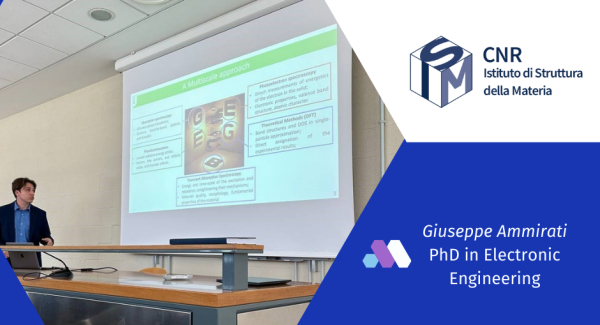The research activities carried out during the PhD concerned the study of innovative materials for semi-transparent photovoltaic applications, which will play a central role in facilitating the integration of new-generation photovoltaics in urban contexts.
Transparency is an extremely delicate aspect in optimizing the performance of a photovoltaic device given that part of the sunlight has to pass through the cell without contributing to the generation of electricity. It will therefore be necessary to find an optimal balance between the degree of transparency and conversion efficiency to satisfy the functional and economic requirements of the devices.
In this thesis work, new materials were synthesized for the development of transparent photovoltaic cells in a tandem configuration capable of absorbing ultraviolet and/or near-infrared light. The device is composed of an upper cell responsible for absorbing the high energy region of the solar spectrum, while a lower cell is optimized to be efficient in the infrared region. Perovskite materials are optimal for making the upper cell, as they show excellent tunability in the absorption band at high energies (>2.3 eV), allowing good overlap with the solar spectrum (about 10%). The lower cell, however, was made with low gap absorbers (<1.3 eV) formed by a mixture of organic systems, capable of being optimized to maximize the overlap with the near-infrared solar spectral region (49% of the solar spectrum).
The optical and electronic properties of these materials have been studied through the synergistic use of different theoretical and spectroscopic methods, such as stationary and time-resolved optical absorption and photoluminescence spectroscopies (femtosecond/picosecond/nanosecond time scale) and photoelectrons with synchrotron light (UPS and XPS). Furthermore, the optical and electronic properties of perovskite materials were simulated using DFT theoretical approaches to accurately determine the electronic structure in the single particle approximation.
These characterizations have allowed us to understand and study the link between physical and chemical properties (e.g., band structures, charge carrier dynamics, gap energies, crystalline structure, etc.) and the performance of these innovative materials when used in photovoltaic devices with a multiscale approach, allowing us to obtain fundamental information to improve the quality of active materials and their efficiency for renewable energy applications.
Thursday, 30 May 2024 08:55
Giuseppe Ammirati awarded a PhD degree at CNR-ISM
Another occasion confirming the close collaboration between CNR-ISM and the University of Rome Tor Vergata is the award of a PhD in Electronic Engineering (XXXVI Cycle) to Giuseppe Ammirati with the thesis "A Multiscale Study of Novel Semitransparent Materials for Photovoltaic Application" which took place on April 19th with internal supervisor Prof. Aldo Di Carlo and external supervisor Daniele Catone of the CNR-ISM. The research activities were mainly carried out at the EuroFel Support Laboratory (EFSL) of the CNR-ISM.
Congratulations Giuseppe for the goal achieved!
Published in
Tutoring


 English (UK)
English (UK)  Italiano (Italia)
Italiano (Italia)